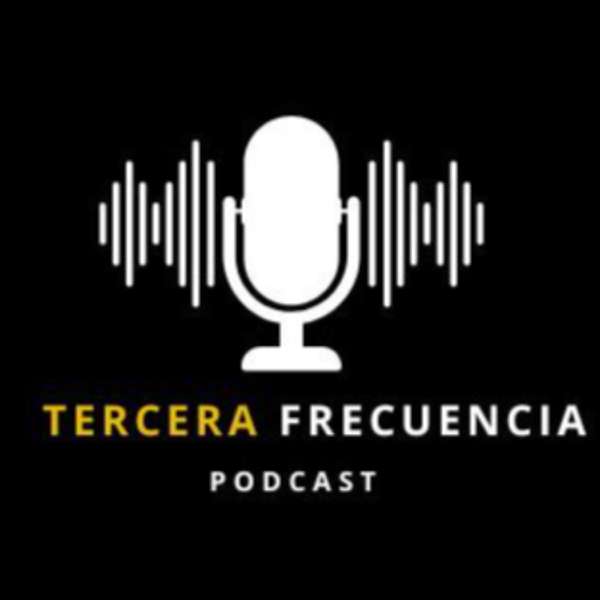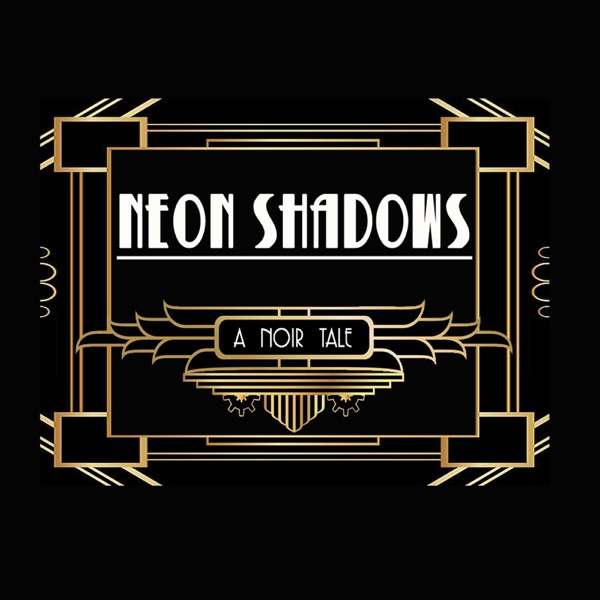The Blue Deck Christmas Special
Hello guys, welcome back to the Blue Deck Podcast. This is our very first Christmas special. For those of you joining us for the first time, an especially warm welcome to you, and merry Christmas one and all.
This show is being published as a standalone episode and as part of our regular ongoing series: The Blue Deck Podcast where we’re going through my novel, Into the Attic of the World, one chapter at a time. Well…I guess it’s a good time to introduce myself. I’m your host, Joseph Mazerac.
Today we’re going to have a quick discussion about the Real Saint Nicholas. That’s right, Santa Clause, Saint Nick, Father Christmas, Sinterklaas—whatever you call him, the legend started a surprisingly long time ago, with a real person called Saint Nicholas.
Before we get into that…Spoiler Alert! In this show, we’ll be talking about the history of our modern Christmas traditions, so, listener discretion advised. Parents, use your best judgment. Personally, I think it’s important to know the story of Saint Nicholas, and in my humble opinion, his story has a special kind of magic that’s at least is powerful as what kids normally believe about Santa Clause. More on that later.
The bulk of this show is based on the article, Yes, America, There is a Santa Clause, written by Pamela J. Adams. If you want to know more about Pamela or her articles, check out her website, TheFactsPaper.com. A link will be in the show notes. She also has letters about St. Patrick, St. Valentine, and many more. The one on St. Valentine is particularly interesting. Let’s just say…What’s he have to do with Valentine’s day, candy hearts, and affectionate greeting cards? Ummm… Not much, so definitely worth checking out if you want the inside scoop.
With that out of the way, let’s get to it. Let’s talk about Santa.
The Real Saint Nicholas
Nicholas was born to a wealthy couple less than 300 years after the resurrection of Christ. That’s about 1700 years ago. He lived in the ancient city of Patara, located in modern-day Turkey. However, young Nicholas was orphaned when an epidemic took his parents, and afterward, his uncle, the Bishop of Patara, raised him in the church.
Later, when he was a teenager, he traveled to the Holy Land. Experiencing where Jesus lived, died and rose again affected him greatly. Then, returning home by sea, a violent storm arose, jeopardizing the ship and all the passengers, but Nicholas prayed for protection, and the sea calmed. The ship and all on board were spared, and as a result, when Nicholas was sainted, he became the patron saint of sailors and voyagers.
That could be the end of his story. Certainly, it’s enough. But when we think of him today, we remember to call him “Saint” but have forgotten that he’s the saint of sailors. Instead, we think of stockings and presents. How did that happen, and why?
Well, as Nicholas grew into adulthood, he felt called by God to the ministry. Just as his Uncle was a bishop in Patara, he rose to bishop in the city of Myra, also in modern-day Turkey.
In those days, the Roman Emperor Diocletian was persecuted followers of Christ. In 303 AD he ordered all Christians to be captured and tortured before throwing them in jail. Because of this, Nicholas soon found himself imprisoned for his beliefs. Despite several beatings, his faith never faltered. In addition, he even defended other prisoners unjustly charged, strengthening to his legacy of humanity and justice.
Relief finally came when Emperor Constantine assumed power in 306 AD. Constantine was the first Roman Emperor to accept and spread Christianity. After taking power, he ordered the release of all Christian prisoners, including Nicholas, who returned to Myra.
Nicholas, an only son, had inherited his parents’ wealth after their death. An ardent follower of Christ, he used his money to buy gifts, food, and other items for the poor and needy.
The most famous story of Nicholas’ compassion involved a poor widower and his three daughters (Now, for those of you who don’t know, a widower is a man whose wife has passed away). The widower could not afford a proper dowry for even one of his girls. At the time, unwed young females often became slaves. Nicholas secretly gave the man money for each daughter. Some say he tossed a bag of gold through a window while others believe he dropped it down the chimney. Regardless, the bag landed in a stocking that was hanging from the mantel.
The father of the girls eventually learned Nicholas gave the anonymous dowries, and when he thanked him, Nicholas simply replied, “Don’t thank me, thank God alone.”
Nicholas died on December 6, 343 AD. He was sainted, and his feast day, December 6th, became known as Saint Nicholas Day. In the 5th century, nuns continued his tradition of anonymously helping the poor. In remembrance of him, during his night, they left food and clothes at the homes of the needy.
The predominance of saints sharply decreased after the Reformation. Nevertheless, Saint Nicholas’ legend continued to grow, taking on variations throughout the world. For example, he is known as “Sinterklaas” in Holland (Where my wife’s parents are from). Germans, Swiss, and Dutch leave shoes and stockings outside the door hoping for candy and treats from Saint Nicholas. However, naughty boys and girls wake to…you guessed it…to lumps of coal.
Eventually, immigrants brought the tradition of Saint Nicholas to America. Clement Clarke Moore’s 1820 poem “An Account of a Visit from Saint Nicholas,” forever changed the legend. The saint became a heavy, jolly man who flies through the air with eight reindeer and slides down chimneys. Cartoonist Thomas Nast finished Santa Clause’s transformation in 1881 with a red suit with white fur trim.
Most legends stem from some degree of authenticity. Actual events are embellished and fantasized with variations in each story. Regardless, the most remarkable element remains the grain of truth that exists in the tale.
Saint Nicholas was an incredibly faithful, God-fearing man. He quite literally fought for the Gospel. Even under torture and imprisonment, he refused to deny his Lord and Savior. He obeyed Christ’s commandment to love his neighbor and used his good fortune to benefit the needy. His legacy remains a map for each new generation that constantly points to Jesus.
So, as Pamela J. Adams puts is: Yes, America, there is a Santa Claus. He was an amazing follower of Christ. Therefore, don’t get distracted by the modern understanding of the jolly old man who gives you presents on Christmas. Instead, focus on the bishop who risked his life and spent his family fortune professing and spreading the Good News of Jesus Christ. This is the Santa Claus we should remember. This is the Santa Claus we should emulate.
Dear listener, I couldn’t agree more.
That ends our history lesson. Stick around after the music if you’re interested in my personal experience sharing this story with my four kids. Once again, a very special thanks to Pamela J. Adams for allowing us to adapt her article for this show. Remember to check out her website, TheFactsPaper.com.
Okay, I’ll make it quick here, but I thought it worth the time to quickly discuss my own experience with the story of Saint Nicholas.
First, I grew up in a home where we never—and I mean NEVER—admitted that “Santa Clause” wasn’t real. That was an idea that was to go UNSPOKEN. My mom especially loved Christmas and the traditions that go along with it. She was (and still is) the kind of person who wraps the presents fancy. She really goes all out, and that’s great. I love it. It makes the occasion that much more fun than it is already. Also, I grew up in a home where we always recognized the true meaning of Christmas, that is to say, we celebrated the birth of our Savior, Jesus Christ.
As the years go by, that is the part of Christmas that’s becoming more and more meaningful to me. Jesus was born to the virgin Mary, he came to live with us, Emanuel. That is worth celebrating. I became a parent, then, as my kids got a little older, my wife and I had long discussions about what we should tell our kids about Christmas. I’m sure many of you have had these same talks. We hoped to join in the festivity, yet, we wanted to tell our kids the truth, and we didn’t want to take away from the focus on our Savior and King on his big day. For my wife, Johanna, Santa had never been that big of a deal. Remember I said her parents were from Holland. They grew up with Sinterklaas. To them, Santa was an American thing. But, even in my wife’s eyes, my family’s traditions seemed like a lot of fun—aside from the part about waking up in the middle of the night to ringing sleigh bells then opening presents one at a time into the wee hours. We pretty much scratched that from the get-go.
Ultimately, we did the whole Santa-Clause thing, just like all our neighbors and friends, and when the inevitable questions arose—Is Santa Clause real?—we agreed wholeheartedly that he was, either that, or we said it was up to them to decide, but, all the while implying he was real.
However. A few times over the years I had looked into “Saint Nicholas.” What was he about? And last year I found Pamela’s article. After reading it, that settled it for me. This guy’s story needed to be told. I mean, come on, that line he said to the widower when his gift-giving was discovered: “Don’t thank me, thank God alone.” The humility that demonstrates, the acknowledgment that all our good gifts come from God. I love it.
So, last Christmas my wife and I sat our kids down. Our kids were 10 years old, 11, 11, and our oldest was 12 at the time. We read to them the article. All the while I was reading, I’d look up to watch their faces. Where’s this going, their questioning eyes demanded to know. They hung on every word, particularly my youngest daughter who must’ve had the least doubts about Santa. How’s this Nicholas guy turn into Santa Clause?
Parents, put yourselves in their shoes. Santa is such a big deal. Christmas is like the greatest day ever.
When the reading ended, they let out with exclamations of, “I knew it,” and… “You lied to us!” (I was worried about that one.) But my youngest, Malia, had the funniest reaction. With her face twisted in befuddlement, she asked, “What about Buddy?” Buddy was our Elf on the Self. I couldn’t stop laughing. Yeah, sweaty, Santa is made up, but Buddy is totally real.
One last thing I want to talk about is the, “You lied to us!” accusation. It’s my strong conviction that parents should threat such claims respectfully. And, indeed, it was one of the reasons I wanted to go ahead and pull off the Band-Aid. Christmas is, legitimately, one of the best, if not the best day ever. As such, it’s very important that my children trust what I tell them about it. So, we were open and honest with them. We told them about how Christmas was celebrated in our homes as children, and we told them about the conflict we had early on about wanting to participate in the holiday traditions while also wanting to never diminish the true meaning of Christmas. In the end, it came to this: that, in a way, Santa is real in that the idea of him motivates people all across the globe to give anonymously, and that is a very powerful and rear event. Consider it, people spend lots of money each and every year to give away things and receive none of the credit. How incredible is that? My one critique is that if Santa Clause was real, living in the North Pole with the elves, working tirelessly in their winterland toy factory, I doubt he’d want the credit either. Instead, I think he would puff on his corncob pipe and say, “Don’t thank me, thank God alone.”
Amen to that.
Do you like the music? I do. Thanks to Brian Wages and Kelanie Gloeckler for letting us use their music in this show. Their Christmas albums Glad Tidings and Great joy is available on iTunes, and each of them have solo albums. Brian’s song, Gelena (Sown in Tears), is used is our regular season shows. And, speaking of that, if you’re new here and you’re interested in youthful fantasy stories, check out the Blue Deck Podcast. As of this recording, we’re right at the end of season two. In each episode, we cover one chapter from my book, Into the Attic of the World. That book is also available on Amazon and wherever books are sold. If you’re looking for something to stuff those stockings—something that cost less than a sack of gold—check it out. It’s about kids going on an adventure into mystery and danger. It’s set in the Nineties, so really, it’s good for the parents as much as it is for young people. A link to our Amazon page is in the description.
Thanks for tuning in. I hope it’s been illuminating. Stay warm out there, and amidst all the hustle and bustle of the holiday season, take those precious moments to slow down and remember the bright hope that came into this world with the miraculous birth of Jesus Christ. I’m sure that’s what Saint Nicholas would’ve wanted.
Buy Into the Attic of the World on Amazon
Click here to read Pamela J. Adams' article, Yes, America, there is a Santa Claus, and visit her home on the web, www.TheFactsPaper.com
Website: thebluedeck.com
Twitter: @josephmazerac
Facebook: https://www.facebook.com/JosephMazeracAuthor/
YouTube: https://youtu.be/Whg8pkLa7Ns
Email: joseph@thebluedeck.com

 Our TOPPODCAST Picks
Our TOPPODCAST Picks  Stay Connected
Stay Connected







